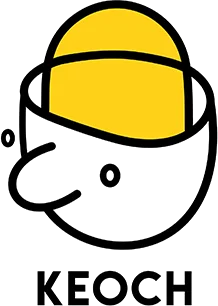Writing blog posts is a great way to share your expertise, but if no one’s finding your content, it’s not doing much for your business. That’s where SEO for blog posts comes in.
Whether you’re running a small business, managing a clinic, or growing your personal brand, this guide will show you how to write blog posts that are optimized for search. You’ll learn how to choose the right topics, structure your posts to match what people are searching for, and use formatting, keywords, and metadata to boost visibility.
Here’s how to optimize blog posts for SEO in six straightforward steps.
1. Start With a Content Strategy
Before you write a single blog post, zoom out. What is your business or brand about? What do you want to be known for?
Your content strategy should focus on your specific area of expertise. That means your blog shouldn’t cover anything and everything — it should stick to topics that are relevant to your services, industry, or audience. This helps search engines understand what your site is about and rewards you with stronger rankings over time.
Ask yourself:
- What kinds of questions do your customers or clients ask you all the time?
- What do you know a lot about that others might be searching for?
- What topics relate directly to the services or products you offer?
Your blog is an extension of your brand. Stay focused, stay consistent, and only write about what aligns with your niche.
2. Choose Blog Topics People Are Searching For
Next on SEO tips for blog posts, it’s time to pick blog topics that people are actively searching for. Even if you’re an expert on a subject, it won’t help your SEO unless there’s real interest in that topic.
There are numerous keyword research tools available to assist you with this step; most offer limited free functionality and tiered subscription models. Check out MOZ, Ahrefs, Google Keyword Planner, just to name a few.
These tools will help you:
- Find popular questions and search phrases related to your field
- See how many people are searching for a topic each month
- Identify related keywords or subtopics to include in your post
Your goal is to choose blog topics that are both relevant to your business and in demand. That’s the foundation of SEO content that works.
3. Use Keyword Research to Shape Your Blog
Once you’ve chosen a blog topic with strong search potential, the next step is to dig deeper into keyword research. This helps you understand what people are really searching for — and how to organize your post to match.
For example, if you’re business is a pain management clinic and the blog topic you chose is “chronic back pain treatment,” keyword tools might reveal related searches like:
- “how to sleep with chronic back pain”
- “chronic back pain vs acute back pain”
- “sciatica treatment options”
- “back pain relief near me”
These phrases give you valuable clues:
- What questions to answer in your blog
- How to break up your content into helpful sections
- Which subtopics or FAQs to include
As you plan your post, choose a small group of keywords and related phrases to include throughout the content. Focus on a primary keyword, a few secondary ones, and relevant questions your audience is asking. Use them naturally — in headings, subheadings, and body text — to help search engines understand your blog and improve your chances of ranking.
4. Structure Your Blog for Search and Readability
To create blog posts that rank well and keep readers engaged, you need a structure that reflects what people are searching for, and makes the content easy to navigate. That means understanding user intent, using the right heading tags, and formatting your post so it’s scannable.
What Is User Intent?
User intent is the reason behind someone’s search. What are they really trying to find out?
If someone searches “sciatica treatment options,” their intent is to learn about treatments. Your blog should give them that answer — clearly and directly.
What Are Heading Tags (H1, H2, H3)?
Search engines scan headings to understand your content. Use heading tags to create a clear hierarchy:
- H1: Your blog post title (used once)
- H2: Main sections of your post
- H3: Sub-sections within each H2
Incorporate keywords naturally into these headings when it fits, especially in H2s.
How Do You Make a Blog Scannable?
Most readers don’t read blogs top to bottom — they skim. Help them get what they need by:
- Keeping paragraphs short (2–4 sentences)
- Using bullet points and numbered lists
- Adding bold text or spacing to highlight key ideas
- Including visuals like charts or graphics when helpful
Good formatting improves both user experience and SEO performance.
5. Add Internal and External Links
Next in SEO best practices for blog posts is links. Links help search engines understand your content and improve your blog’s SEO. Use both internal links (to other pages on your site) and external links (to reputable sources) where relevant.
Always hyperlink descriptive text that matches the content of the page you’re linking to — it’s better for SEO than vague phrases like “click here.”
How to Use Internal Links
Internal links connect one page of your website to another. They help:
- Guide readers to related content
- Pass SEO value to important pages
- Show search engines how your site is organized
How to Use External Links
External links point to reputable websites outside your own. They help:
- Show that your content is well-researched
- Strengthen topic relevance
- Build trust with both readers and search engines
Include 1–2 high-authority external links per post. These are well-established sites like government agencies, medical institutions, or major publications. You can check a site’s authority for free using tools like Ahrefs Authority Checker.
6. Write a Meta Description
The meta description is the short summary that appears under your blog title in Google search results. It doesn’t directly affect your ranking, but it can influence whether someone clicks on your post.
- Keep it under 160 characters
- Include your main keyword
- Make it clear what the blog is about and why it’s helpful
What Does a Good Meta Description Look Like?
Keeping with our pain clinic example, a meta description for one of their blog posts might look like this:
| Search Term | Meta Description |
|---|---|
| sciatica treatment options | Explore common treatments for sciatica — like physical therapy, injections, and lifestyle changes. |
| how to relieve lower back pain | Try these at-home strategies to relieve lower back pain, including stretches and posture tips. |
| when to see a doctor for back pain | Learn when back pain may need medical attention and which symptoms to watch for. |
| what is interventional pain management | Understand what interventional pain management is and how it can help with chronic pain. |
Each one is under 160 characters, includes the main keyword, and gives a clear reason to click.
Ready to Rank? Keoch Can Help.
If you’re feeling overwhelmed — or just don’t have the time to manage SEO on top of everything else — Keoch is here to help.
We specialize in SEO strategies that drive real growth for small businesses, healthcare providers, and service-based brands. Whether you need help building a content plan, optimizing blog posts, or improving your site’s overall search visibility, we’ve got you covered.
Explore our SEO services to learn how we can help you get found, get clicks, and grow.







